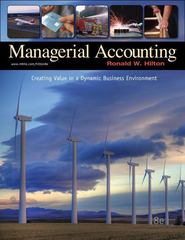Question
Ted provided you the following information about his business income and outflows for the years 2012 through 2014. After a long discussion with Ted about
- Ted provided you the following information about his business income and outflows for the years 2012 through 2014. After a long discussion with Ted about his business, you also determined that in 2012, Ted entered into a long-term contract to provide services to a large client of his. The contract terms called for an advance payment in 2012 of $200,000 and the length of the contract was to be 20 months. Ted signed the contract on July 2, 2012 and started work for this client the next day. The client paid him upon signing of the contract and this amount is included in the cash receipts listed below for 2012. After 16 months, the client decided to terminate Teds services and demanded the remainder of their money back. Ted returned the remainder of the money at the beginning of 2014, but instituted a lawsuit for breach of contract to get the money back. The cost to Ted is included in the cash payments shown below for year 3. Ted also pays his employees and himself a monthly salary payable on the last day of the month, with the exception of December when Ted tells the payroll accountant to move payday to the next day for that month only. Ted runs the business as a corporation. The employees monthly salaries are $10,000 and Teds salary is $20,000 per month. These amounts are not included in the below balances of accounts payable. Below is relevant information on the cash ins and outs of Teds business. You should assume that the monthly payroll is not included in the beginning (if any) and ending accounts payable, BUT it is included in the amounts of cash expenses. In other words, do NOT assume that you need to make adjustments to the amounts below for expenses shown. If you do, your calculations will be off and you will be unable to reconcile the cash and accrual methods completely.
|
| 2012 | 2013 | 2014 |
|
|
|
|
|
| Beginning Accounts Receivable | 200,000 | 350,000 | 175,000 |
| Ending Accounts Receivable | 350,000 | 175,000 | 150,000 |
| Cash Received | 600,000 | 700,000 | 800,000 |
| Beginning Accounts Payable | 150,000 | 250,000 | 275,000 |
| Ending Accounts Payable | 250,000 | 275,000 | 300,000 |
| Cash Expenses | 380,000 | 450,000 | 500,000 |
Required: Calculate Teds business net taxable income based upon the accrual method. Then calculate Teds business net taxable income on the cash method. Ignoring tax law that would have required Ted to make a choice in the first year of his business and based solely on the three years of information you have available, recommend the best method of accounting for Teds business and explain your reasoning.
Step by Step Solution
There are 3 Steps involved in it
Step: 1

Get Instant Access to Expert-Tailored Solutions
See step-by-step solutions with expert insights and AI powered tools for academic success
Step: 2

Step: 3

Ace Your Homework with AI
Get the answers you need in no time with our AI-driven, step-by-step assistance
Get Started


